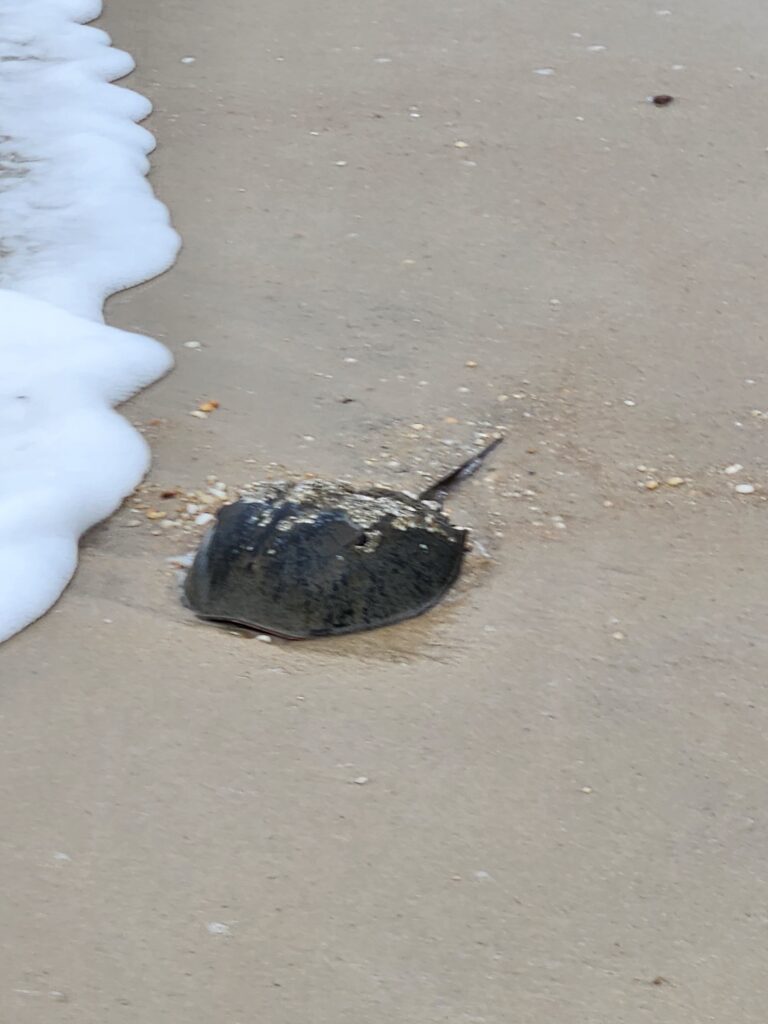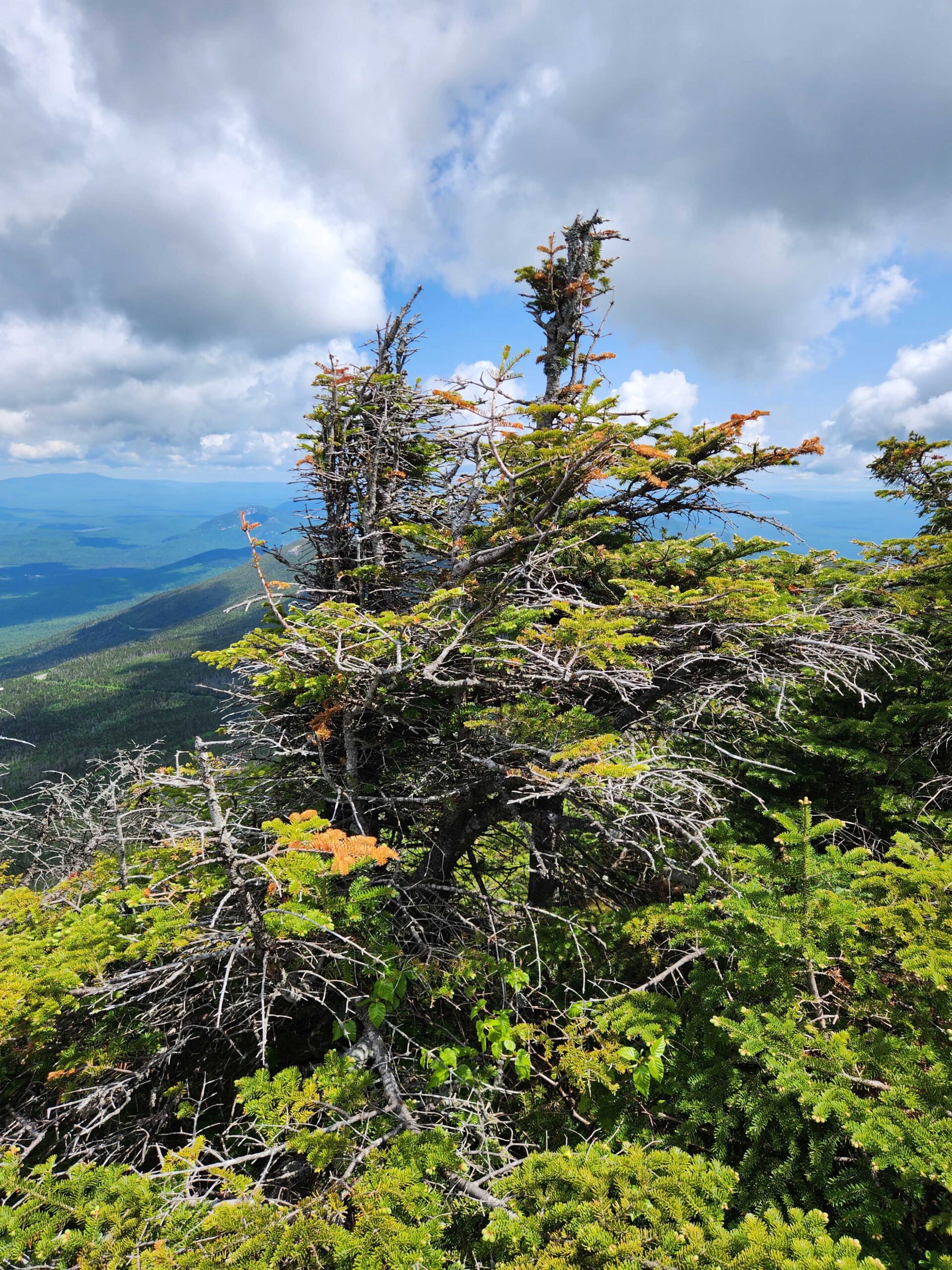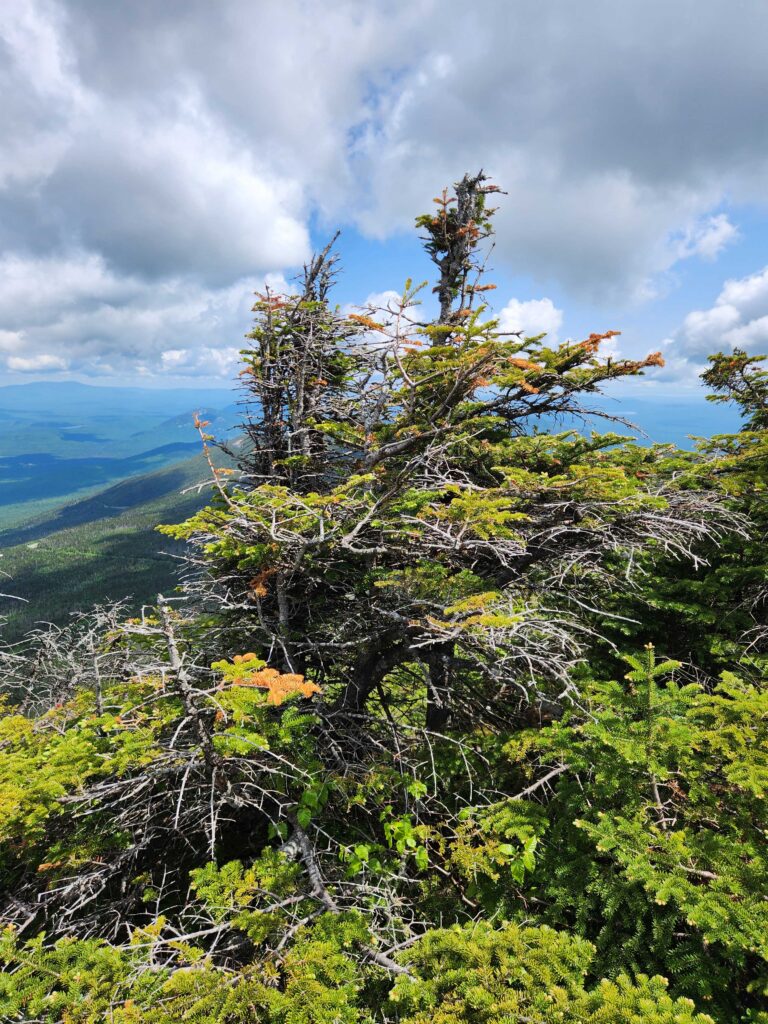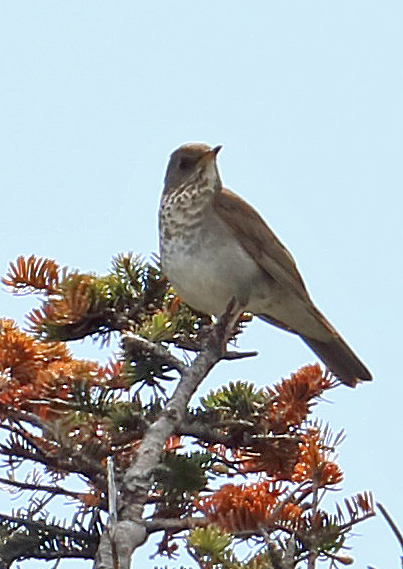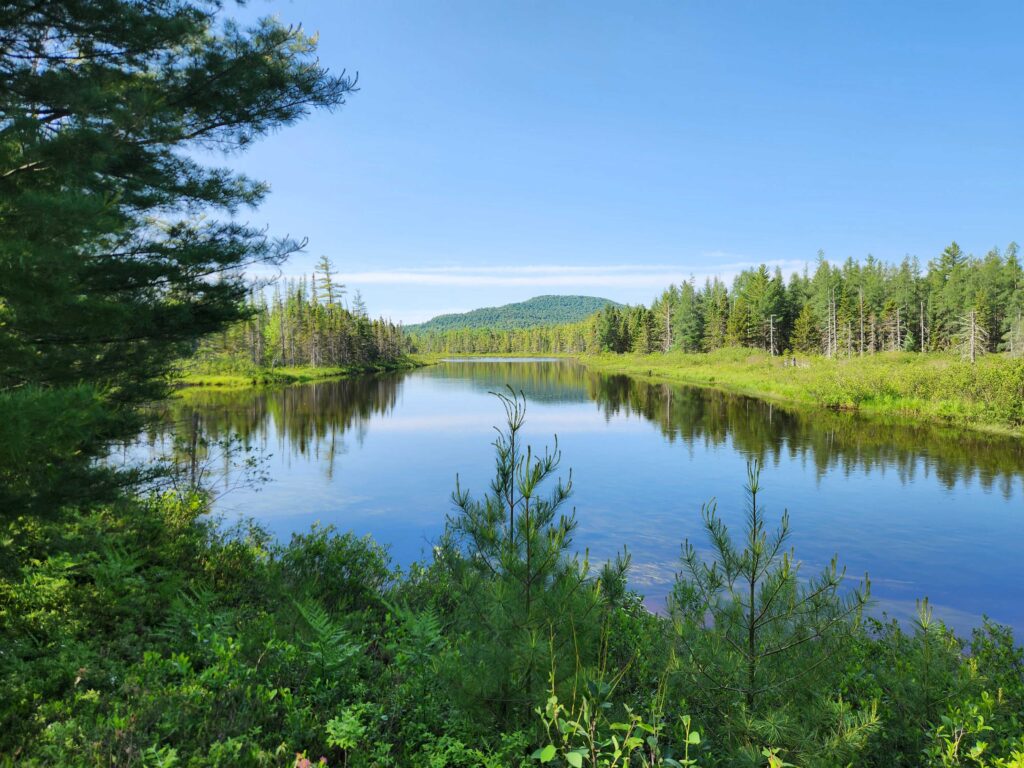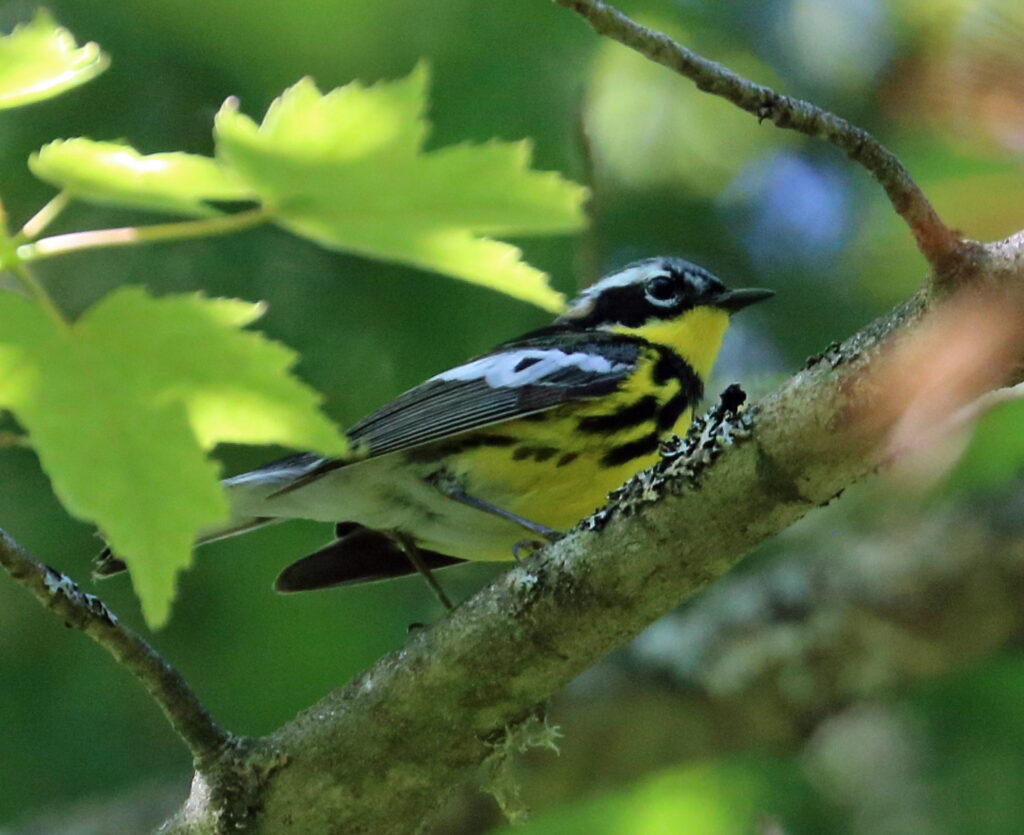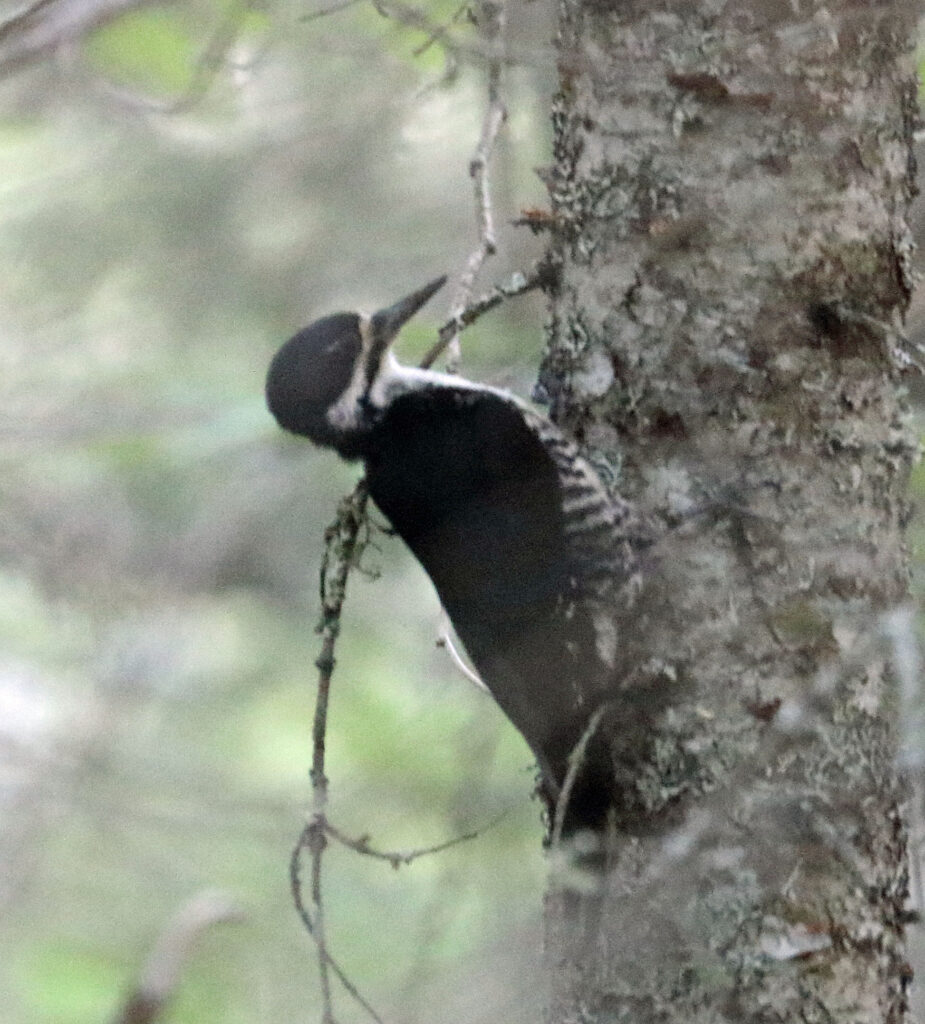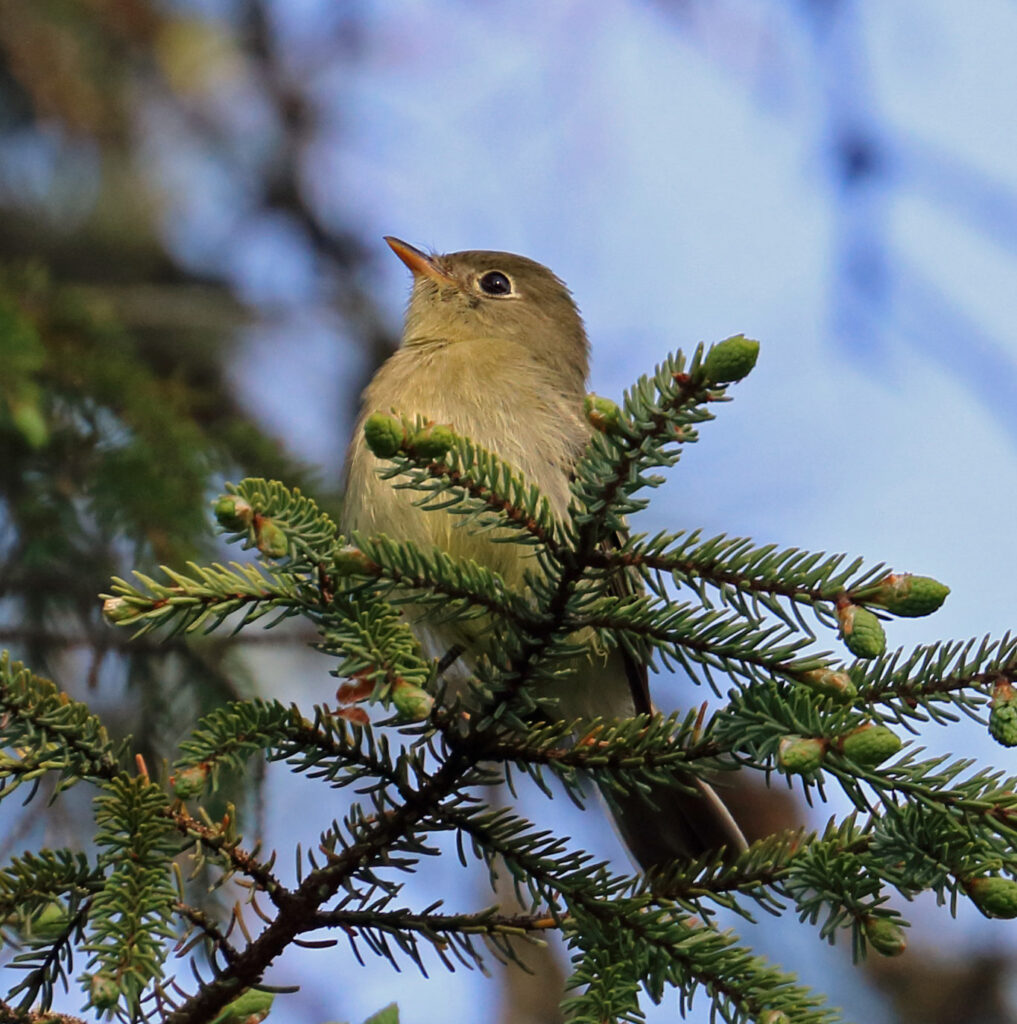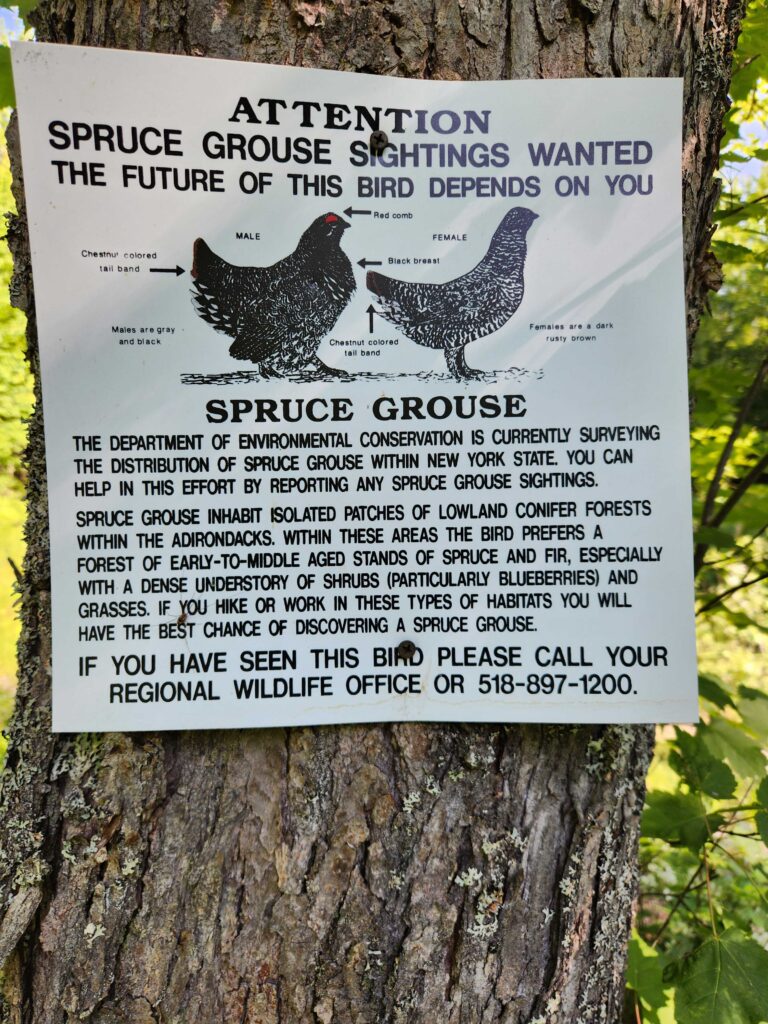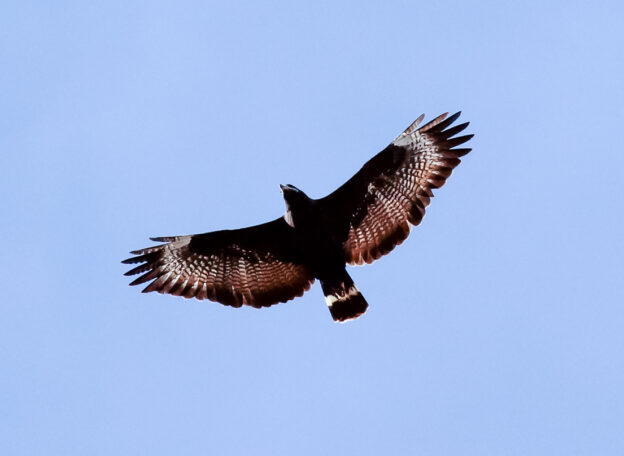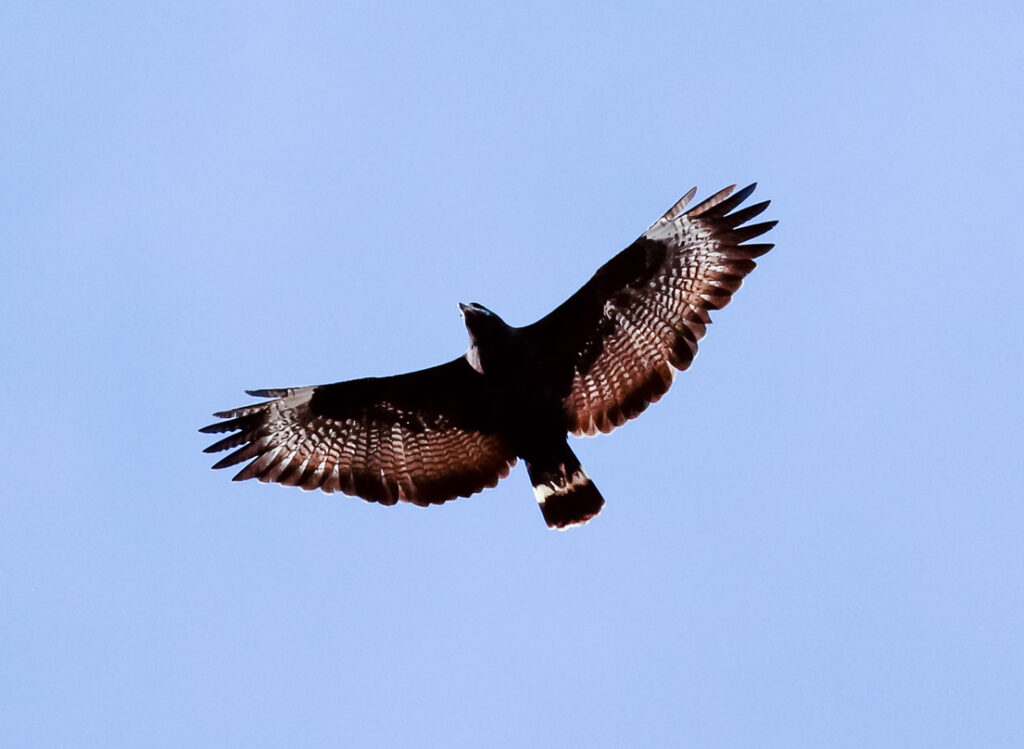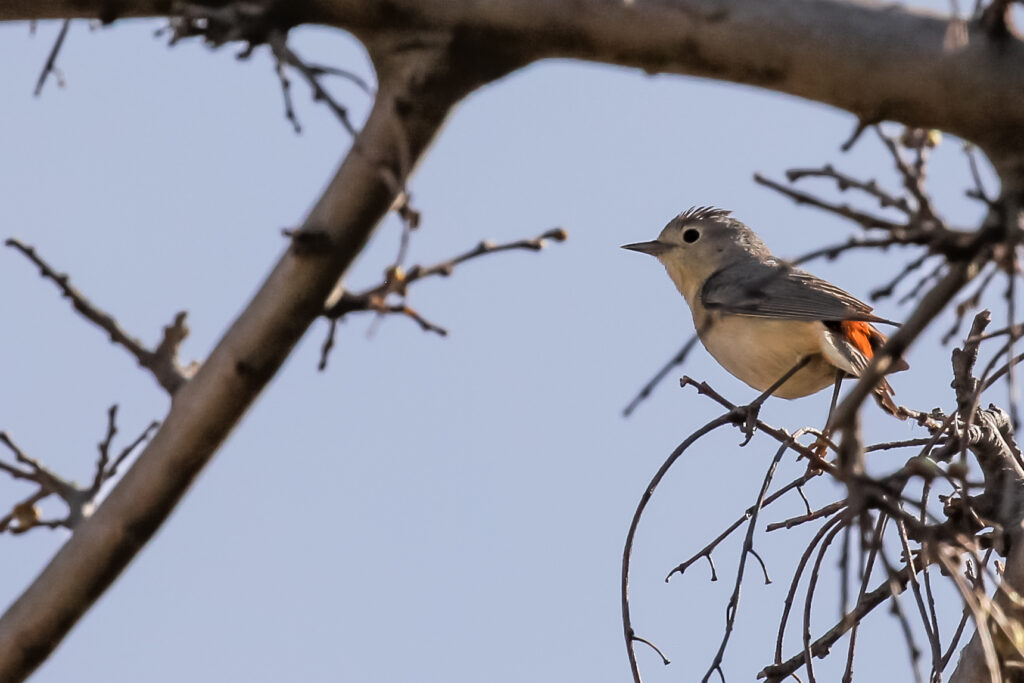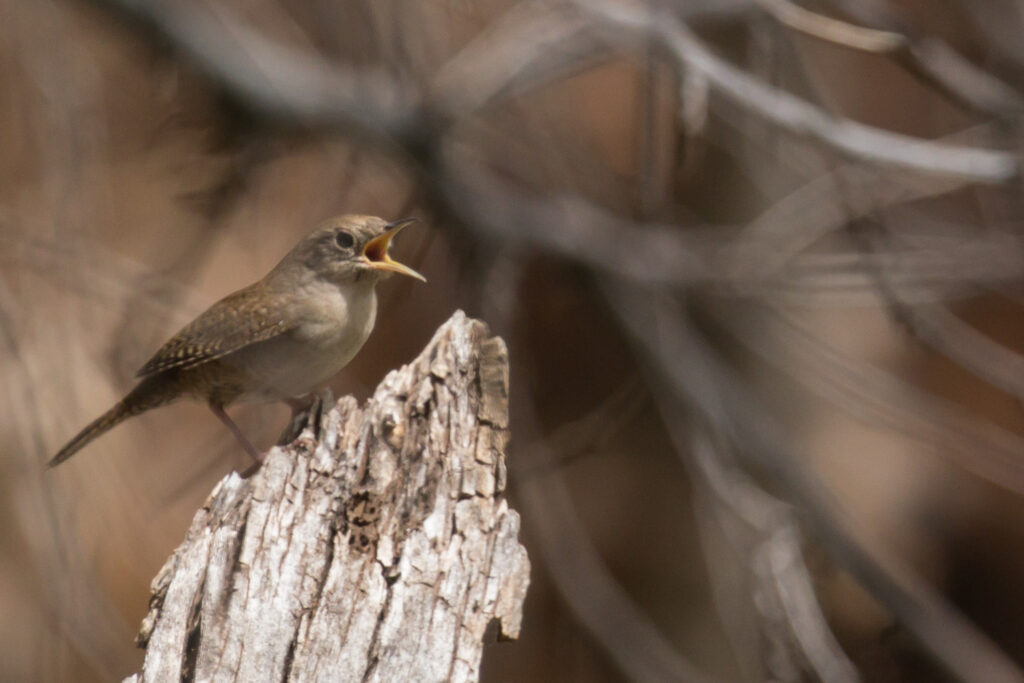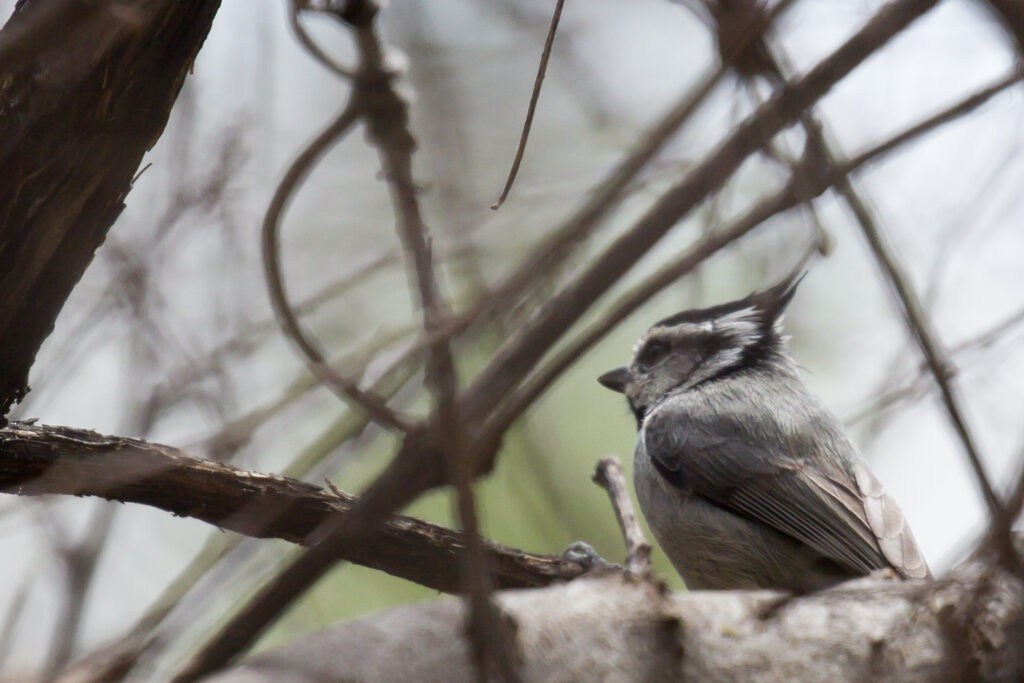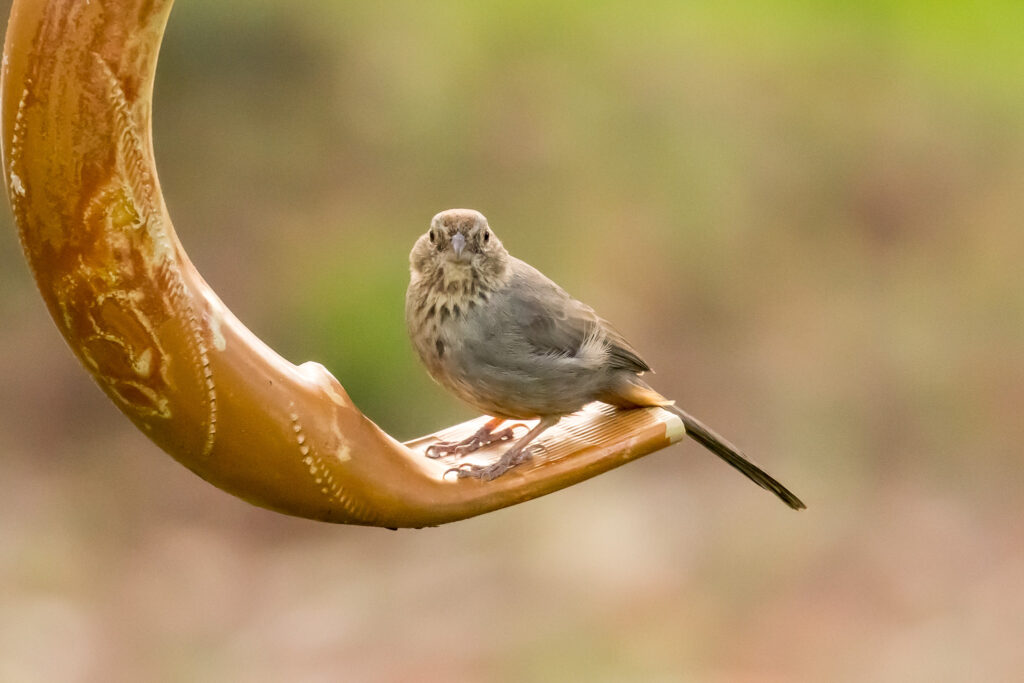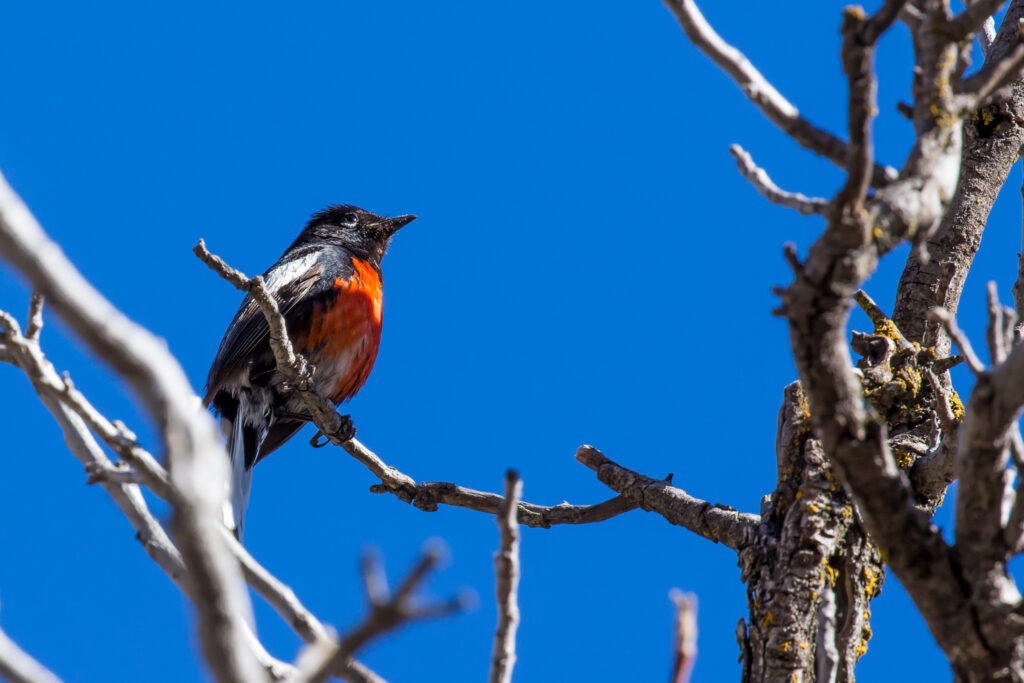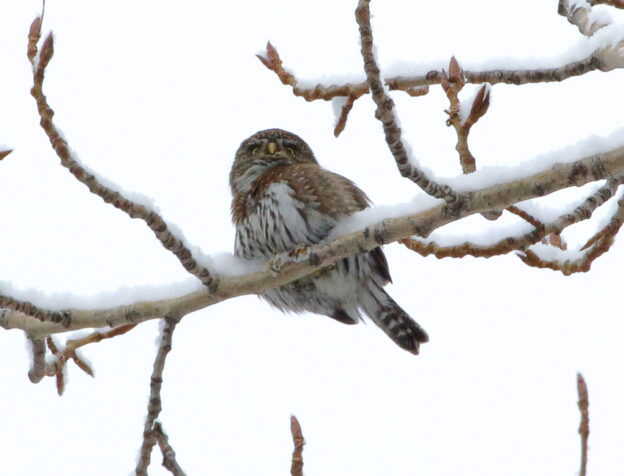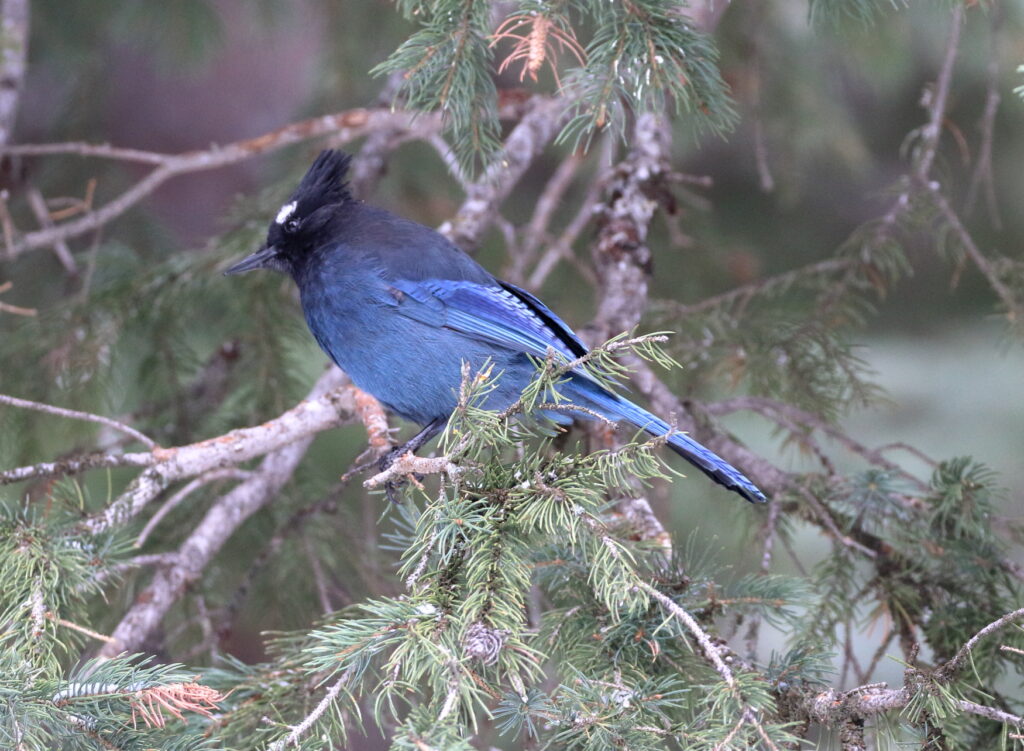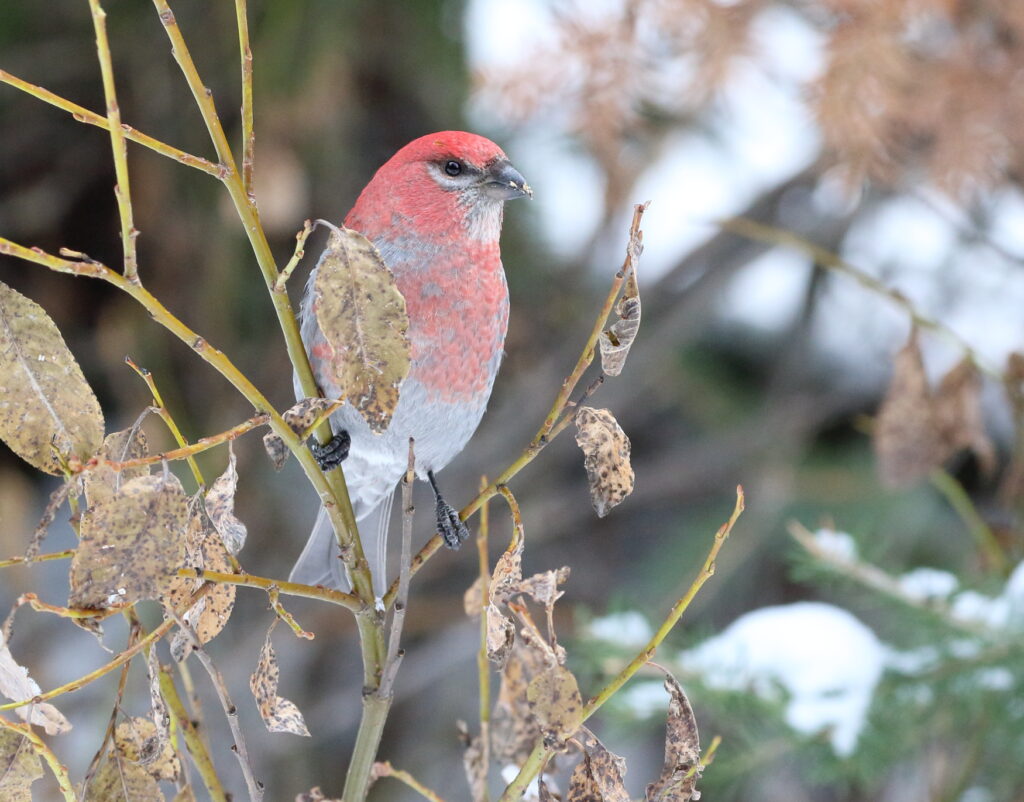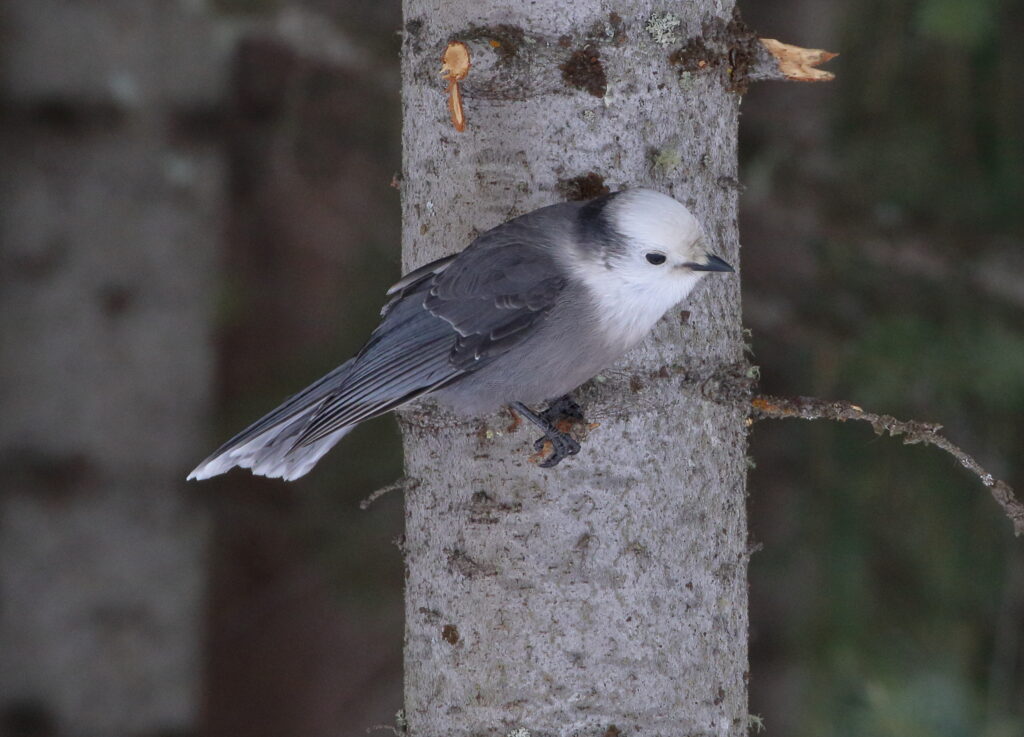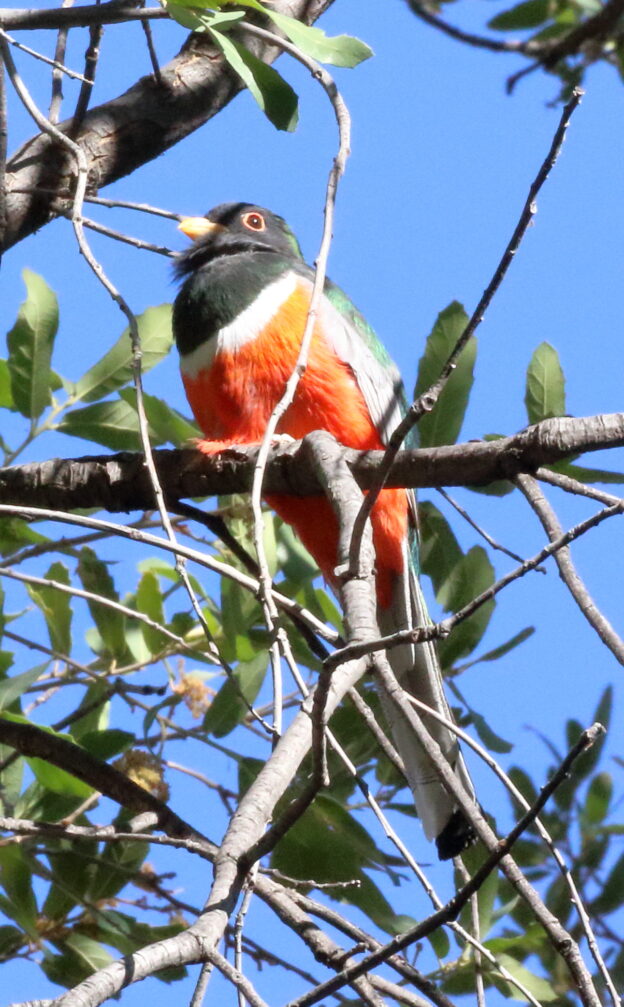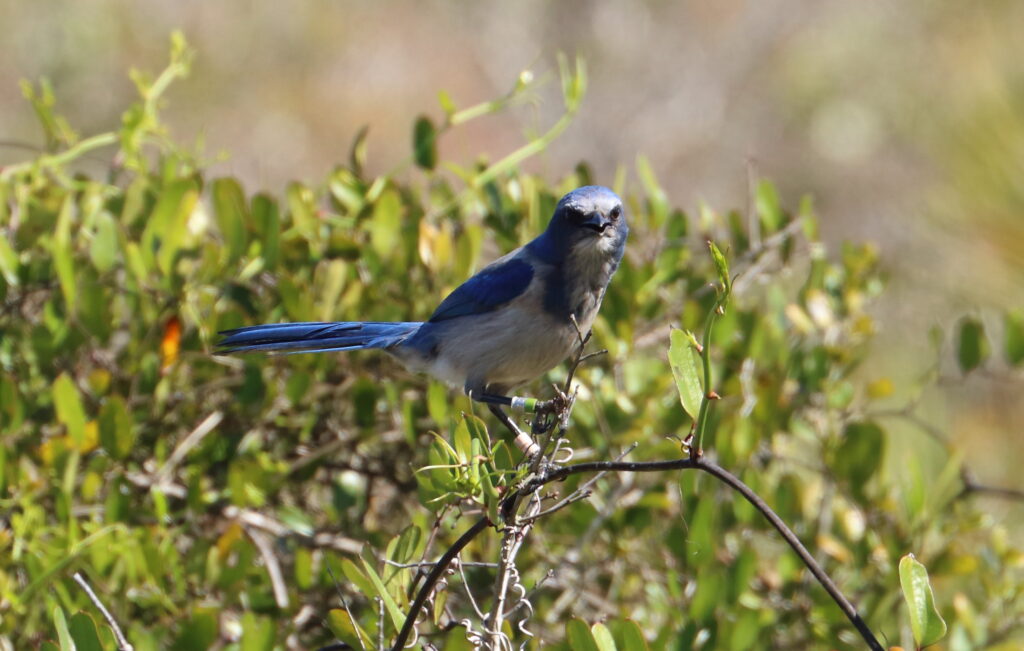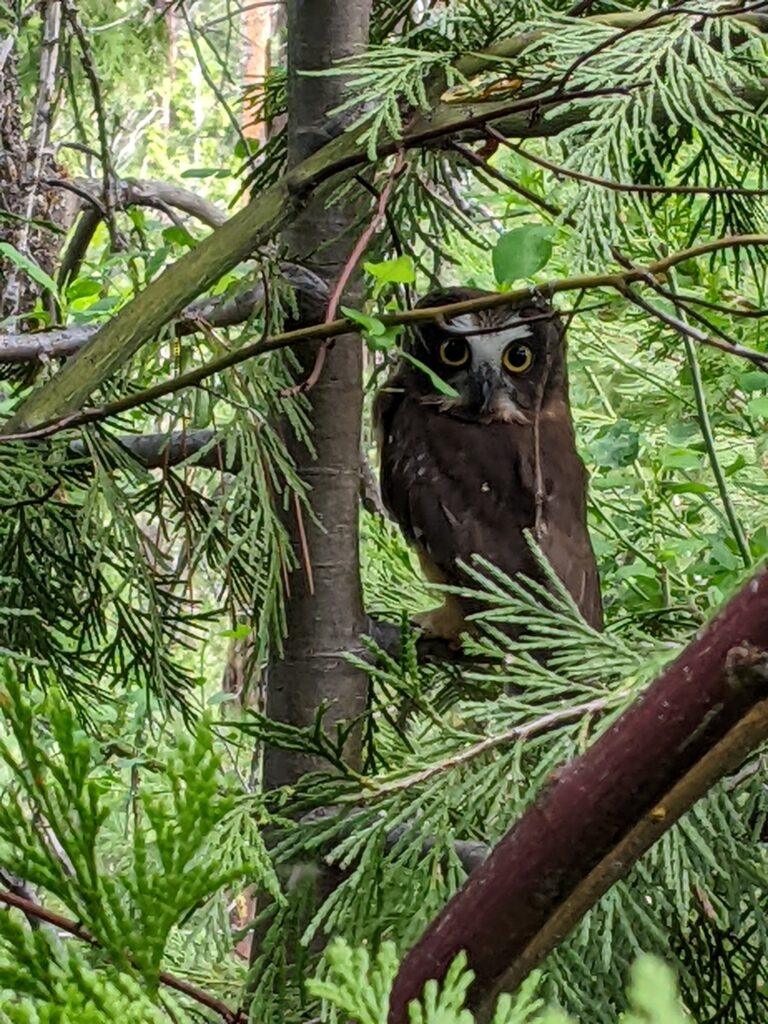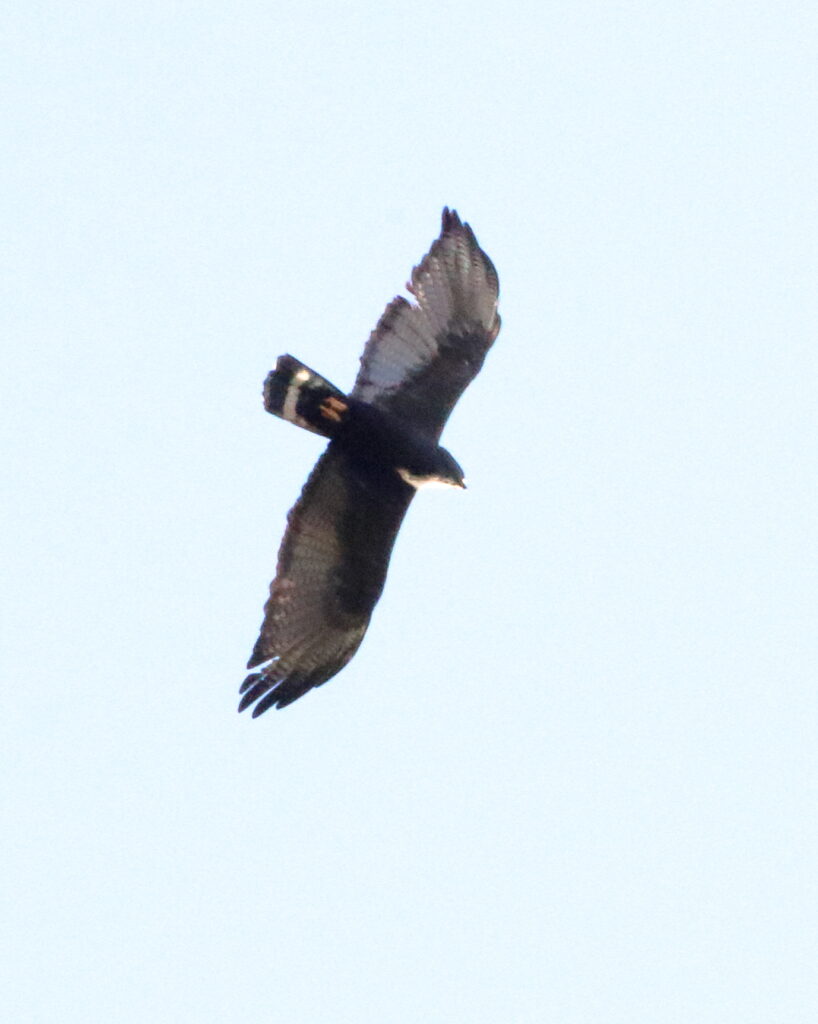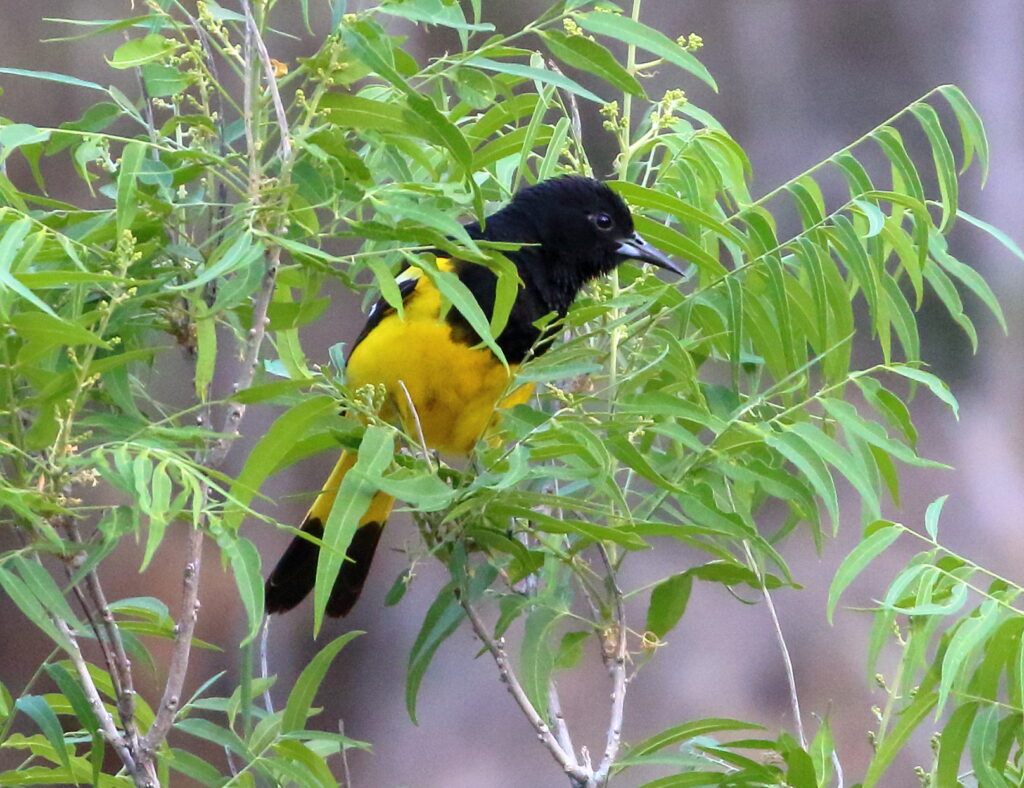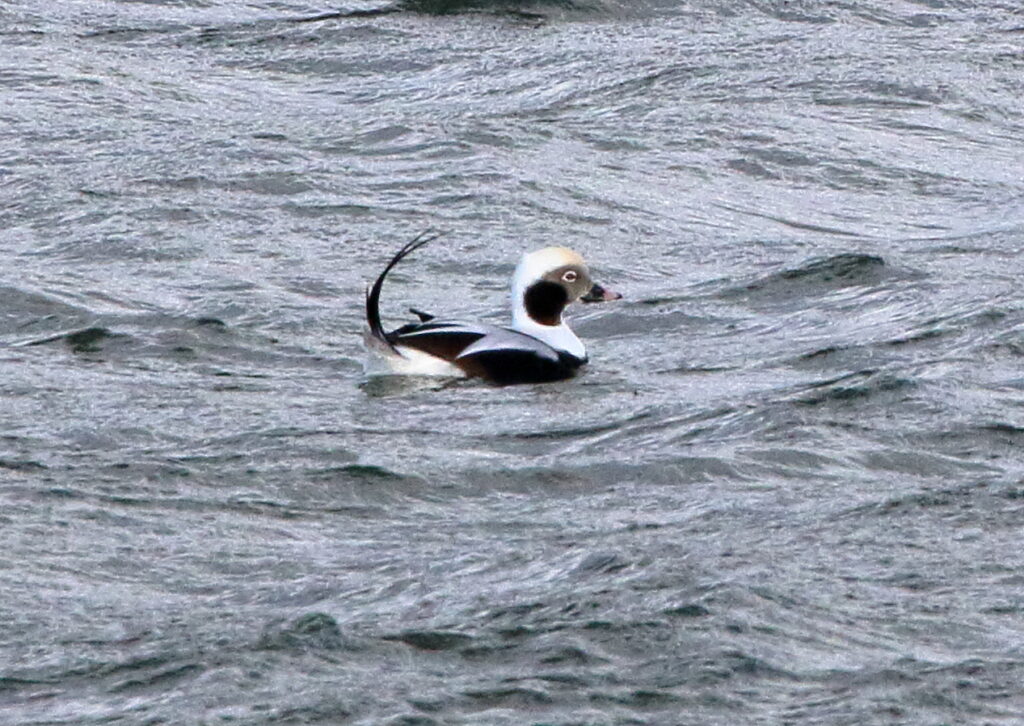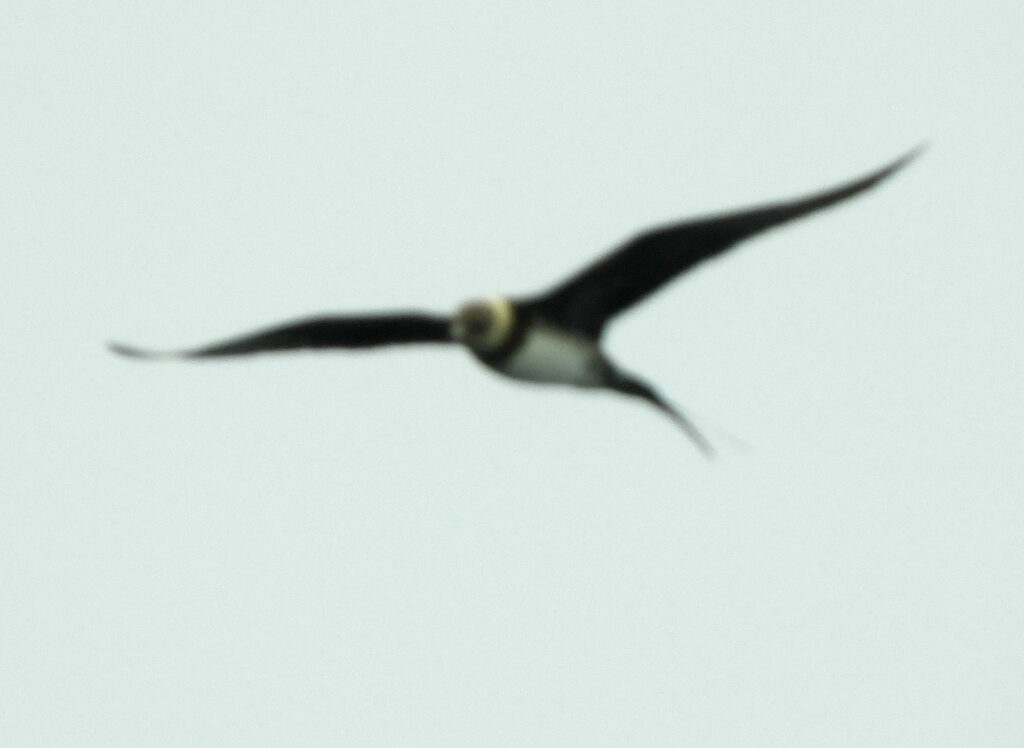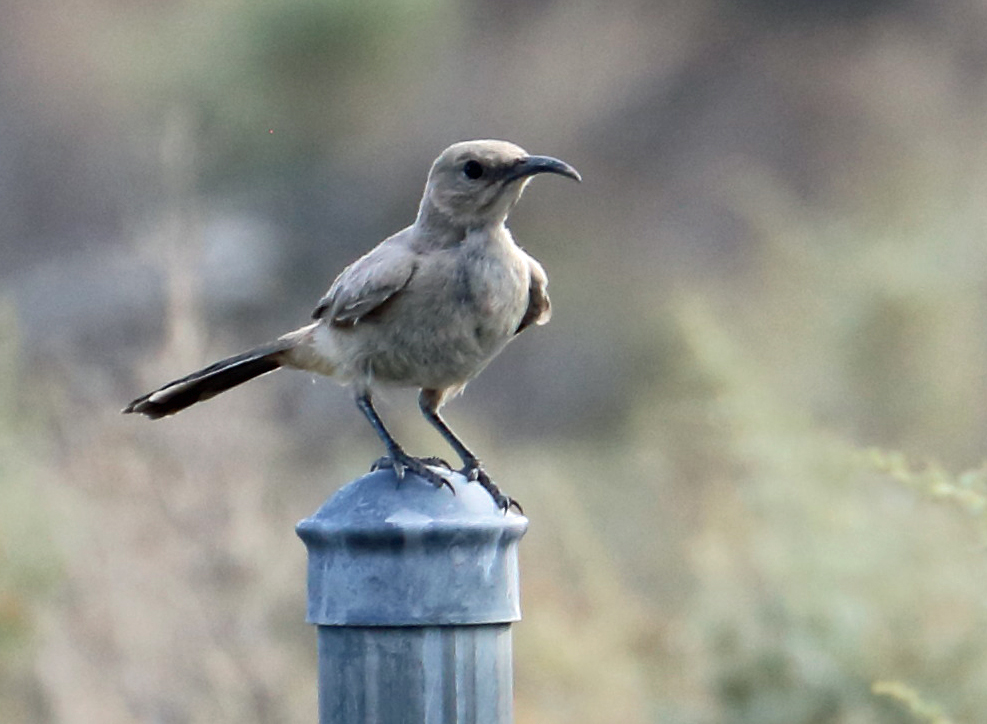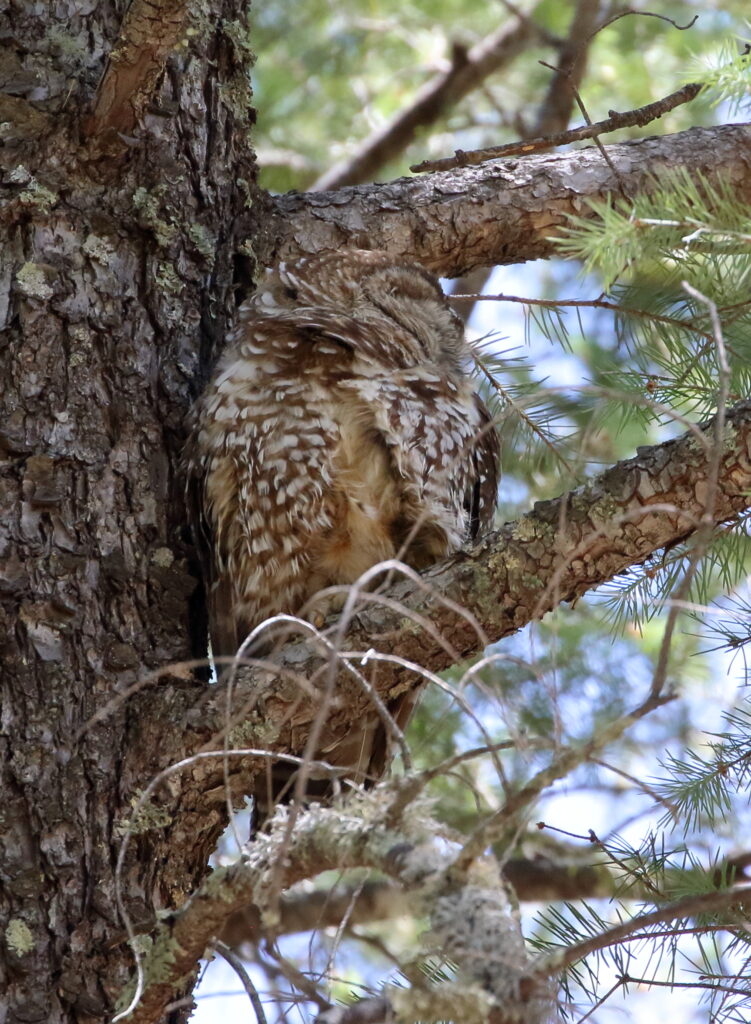I had thought about everything I needed for the two-day trip to Cape May, New Jersey. Tent and sleeping supplies, check. Food and water, check. Cash for toll roads, check. Nothing could go wrong, right? And then, I turned on the field vehicle and promptly backed it into a fence post.
Thankfully, as my crew leader Tyler Hodges assured me later, the damage was limited to some paint marks and a small crack on the plastic on the end of the Jeep, and I was soon on my way, navigating Pennsylvania and New Jersey highways as I headed east, then south. My days off this summer would be limited to one per week, which meant any and all birding trips would have to be quick, even more so than last summer. This one, my first of the summer, was just about as quick as possible, as I planned to spend the night in southern New Jersey and drive back to the Pocono Mountains of northeastern Pennsylvania the following afternoon. I had rarely driven this far on my own, so I made sure to take as many breaks as necessary as I drove south. One of these included a fifteen-minute rest at a place called Cheesequake State Park in northern New Jersey, which produced a very cooperative Great Crested Flycatcher, calling on top of an exposed branch as I walked into the park bathroom. Good birds already!
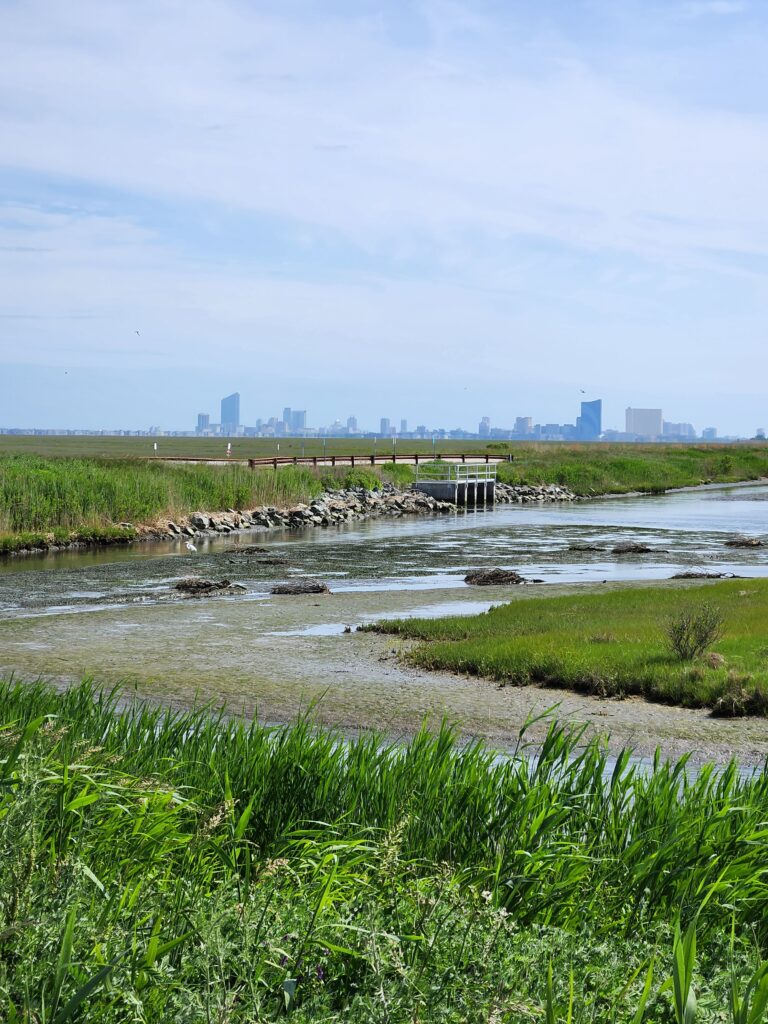
At around 2 p.m., I pulled into Edwin B. Forsythe National Wildlife Refuge, the birding hotspot that had originally caught my eye and led me to take this trip. The primary target birds I had here were Gull-billed Terns, one of the last common North American terns I had yet to see. These odd-looking terns lived on coasts all over the world, and this wildlife refuge was their most northern colony in North America. As I paid my entry fee and started the loop drive around the refuge, I could quickly see why the terns loved it here. An expansive saltmarsh sprawled before me, interspersed with patches of open water and exposed mudflats. I could see both the skyscrapers of Atlantic City and the blue horizon of the Atlantic Ocean in the distance. I had timed my visit so that I would arrive during the low tide, targeting a group of birds that my dad and I always seem to be chasing: shorebirds. Sure enough, the mudflats in front of me were covered in them. Hundreds of tiny Semipalmated Sandpipers probed the mud, extracting invertebrates with their bills. A buzzy song came from the grasses on the opposite bank from me, and I lifted my binoculars to reveal a male Seaside Sparrow, belting his little heart out. I’d gotten my lifer Seaside Sparrow last year in Florida, but these were far better views, which would continue to improve throughout the day.
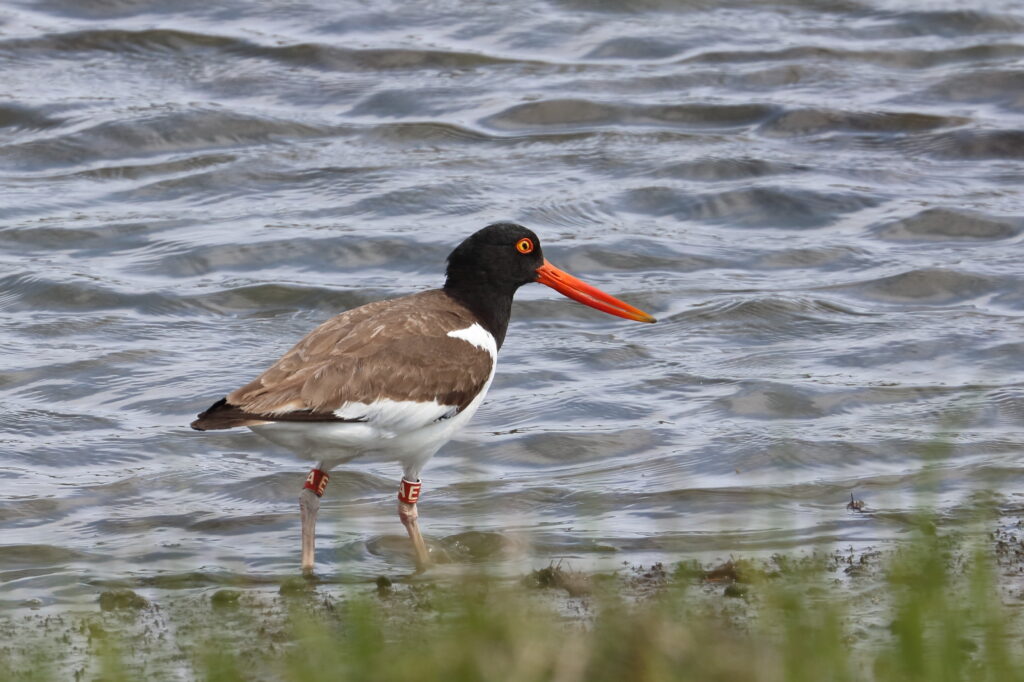
As I continued driving, the birds just kept coming. Semipalmated Sandpipers were not the only shorebirds taking advantage of the exposed mud, although they were by far the most numerous. I was granted close views of Short-billed Dowitchers, Dunlin, Ruddy Turnstones and Black-bellied and Semipalmated Plovers, all in their sharp breeding plumages. I spotted a Black-necked Stilt in one pond, an apparently rare bird here, and was treated to a few looks at a Whimbrel flock as it lifted from a field and flew over me. Later on during the drive, I added Least Sandpiper and both yellowlegs to my list. Almost all of these birds were on the move, having stopped here to refuel on their way to their arctic breeding grounds. There were a few resident shorebirds around, too, including the “Saltmarsh” Willet (a subspecies I had never seen before) and a single, banded American Oystercatcher in a ditch on the side of the road.
Apparently I had hit Edwin B. Forsythe at the perfect time, because all of the saltmarsh birds were out to play. Along with the Seaside Sparrows, I also glimpsed a few Saltmarsh Sparrows, a bird that I’d last seen with my dad in Massachusetts two summers prior. I had also spent my spring semester at the University of Maine working for Dr. Kate Ruskin, a Saltmarsh Sparrow researcher, so it was really cool to see the species that much of my work had revolved around! Unfortunately, this species is expected to go extinct by 2060 due to climate change-induced sea level rise, which would wipe out its entire nesting habitat. Lots of work is being done on the species, however, and hopefully some solutions arise to combat their disappearance. Along with the sparrows, I also was treated to fabulous looks at a Clapper Rail out in the open, and nearly double-digit numbers of Ospreys.
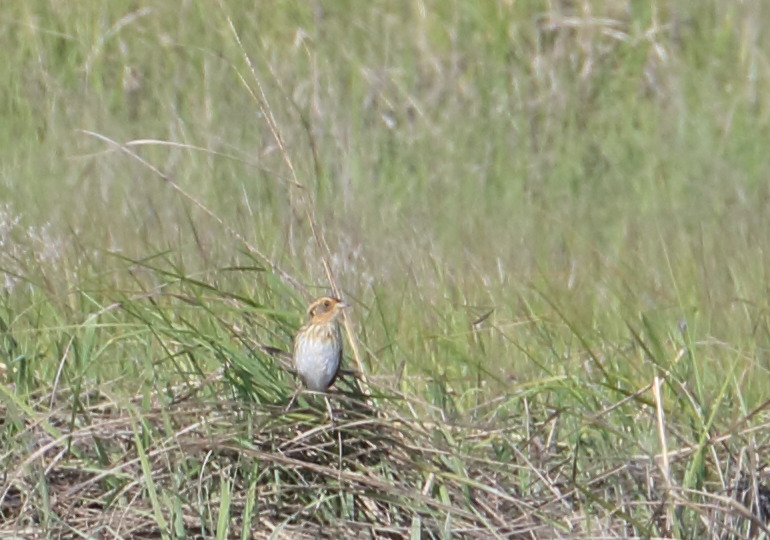
But the real treat at Edwin B. Forsythe was the terns. Forster’s Terns seemed to be in charge around here, and I saw dozens of them, plunge-diving into the shallow water for fish and resting on mudflats. There were also Least Terns, the smallest terns in the world, and one Caspian Tern, the world’s largest tern, providing great looks. One crowd of birders revealed a large flock of roosting Black Skimmers, also in the tern family, and always a joy to see. And, as I rounded a bend about halfway through the drive, I got my first lifer of the trip: three Gull-billed Terns, lounging on the mudflats! I stared at them for a while, admiring their blunt, black beaks. Unlike the other terns mentioned, Gull-billeds apparently never plunge-dive, instead preferring to eat crabs and other invertebrates. That likely explains the unique bill shape!
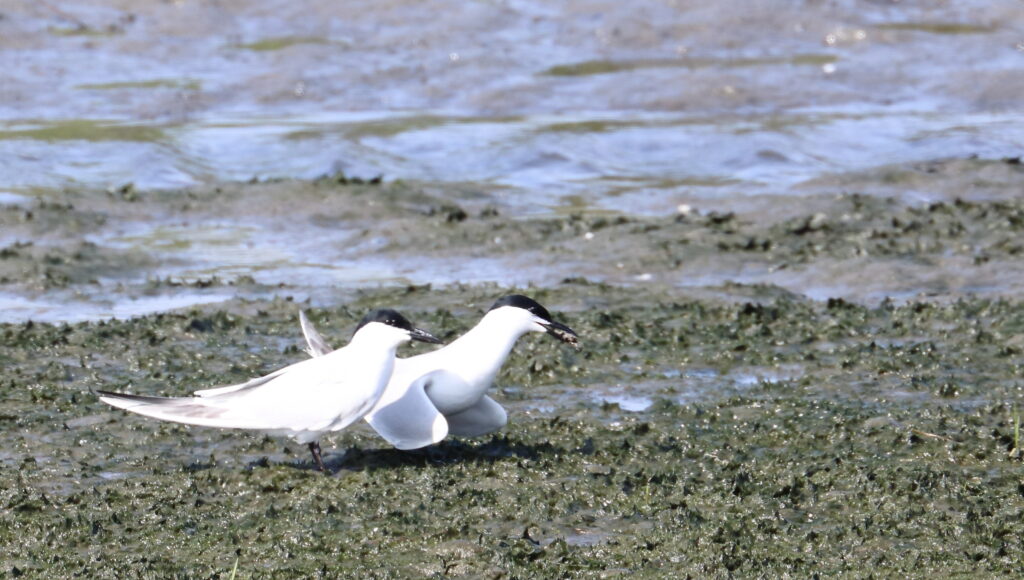
The sun began to hang low as I pulled out of Edwin B. Forsythe, and I headed for my next birding location, where I’d be staying for the night. Belleplain State Forest was located pretty far south in New Jersey, smack dab in the middle of the largest tract of Atlantic coastal pine barrens left in the world. This unique ecosystem was full of pine trees as well as a diverse assemblage of plants and animals, partially thanks to the area’s sandy soil. As I drove up to my campsite, I was reminded of the southeastern Longleaf Pine forests, the same ones that host Red-cockaded Woodpeckers and Brown-headed Nuthatches. While neither of those birds make it this far north, several southerners do, and I quickly set up my tent so I could get out and look for them. The campground bordered Nummy Lake, and I chose this as my focus, noting the tall pine trees and swampy terrain surrounding it. Within seconds, I heard my first target bird: a Yellow-throated Warbler. A little bit of pishing soon brought the bird into view: a beautiful gray, black and white warbler with a splash of yellow on the throat. My lifer Yellow-throated had been in a very similar habitat down at St. Marks National Wildlife Refuge in northern Florida the previous spring, though not quite as confiding as this individual. After checking me out, the bird returned to the tops of the trees, where it continued to belt out its song.
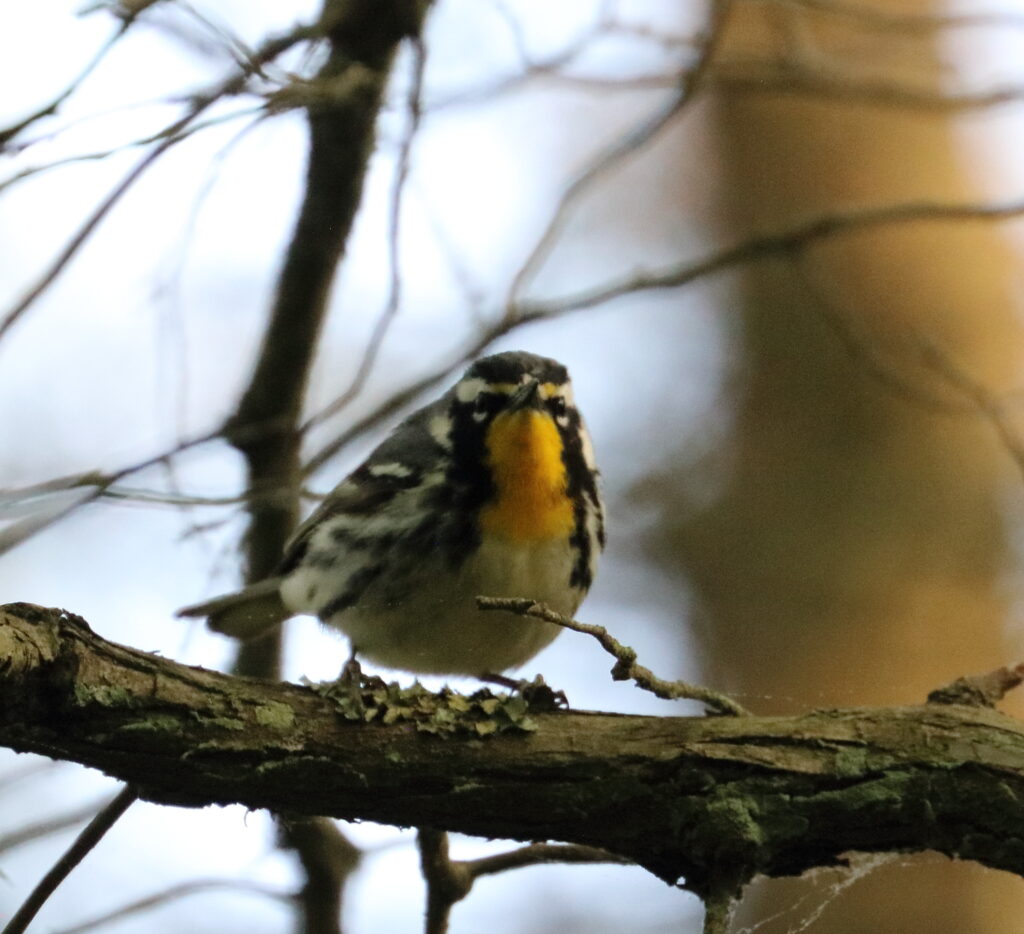
I picked up White-eyed Vireo, another more-southerly bird, as I kept walking, searching the trees for my second target at Belleplain. Then, in the distance, I heard a song that matched the recording on Merlin almost exactly, and made a beeline straight for that location. Once there, I played for the bird twice. No dice. I sighed. “I was really hoping to get this one. Oh well.” Suddenly, I heard a flutter of wings right above me. I looked up, to see a Prothonotary Warbler staring down at me from a branch no higher than two feet above my head. Even in the dying sunlight, it’s brilliant golden feathers stuck out against everything else. My jaw dropped. The Prothonotary flew over to a bush beside me, staring at me with curiosity and searching for the rival bird it had just heard. While I’d seen a lot of birds in the last few weeks, including a fair number of life birds, no bird had made my heart thump this hard inside my chest. A few incredibly special moments passed, and then the bird fluttered away, probably headed for bed, as I would be soon. The last time I had seen this bird was seven years ago, at High Island Texas, during my dad’s and my first big year. It had been the first bird on that trip to blow our minds, and represented the first year that I’d really begun to take birding seriously. Prothonotary Warbler had helped kick off my passion, and here I was seven years later, sharing a moment with another one, more than a thousand miles from that first encounter. I had no idea I would feel this way when I’d set my sights on one during this trip.
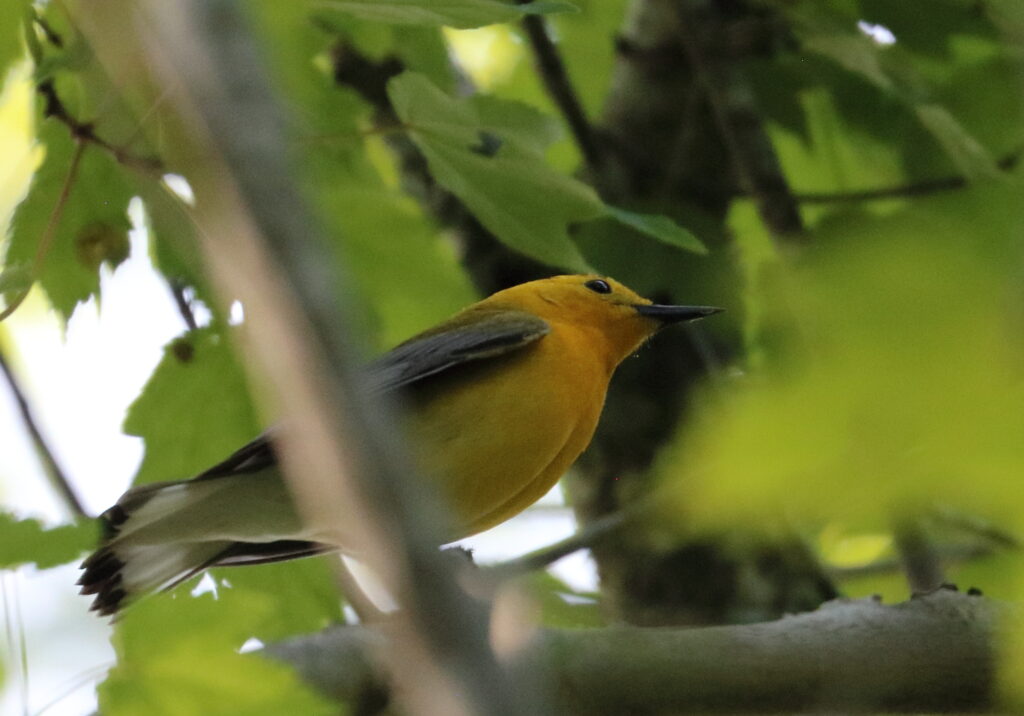
The sun was setting, but the day wasn’t done. I plugged a Google Maps pin into my phone for another bird that loved southeastern pine forests. As I headed towards the spot, I took a brief stop at the Belleplain State Forest visitor center to go to the bathroom and brush my teeth. As I stepped out of the car, the songs of three flycatchers greeted me—two Eastern Phoebes and an Acadian Flycatcher, the latter a lifer! After missing that one at Nummy Lake, I certainly had not expected to get one singing at dusk along the side of the road, but then again, there is something special about parking lots! I listened to its “pizza” calls for a bit, then hopped back into the Jeep. Five minutes later, I pulled over on the side of the road and was immediately rewarded with my next target bird: Chuck-will’s-widow. Four of them called from the trees surrounding this random, rural dirt road, and I was reminded of my lifer last March in the Everglades.
The next morning, pounding rain on my tent woke me. While I’d been hoping for a better forecast, I had prepared for it and didn’t expect to see many birds today. However, what I would see was almost as cool. Forty minutes after leaving Belleplain State Forest, I got off at the last exit on the Garden State Parkway and entered the town of Cape May, New Jersey, one of the best birding spots on the continent. I joined several birders who already had their scopes trained on the waters of Delaware Bay at a hotspot called the Coral Avenue Dune Crossing, which consisted of a large wooden standing area overlooking a sandy beach and the ocean. While there weren’t many birds flying around (although the Forster’s Terns were again putting on a show), a tour group showed up after about half an hour, and I eavesdropped to learn a little bit about the famous birding location. The tour, it turns out, was being led by Tom Reed, the top eBirder for the hotspot location and one of the people who started many of the projects happening at Cape May. While Cape May, a peninsula at the bottom of New Jersey, certainly held plenty of potential during spring migration, it really outshined anywhere else on the eastern seaboard in fall. Because of its shape, thousands of migrating birds following the Atlantic coast would be funneled into it every autumn, halted by the daunting flight across the mouth of Delaware Bay. The migrants all stopped here, in mind-boggling numbers—Tom spoke of kettles of thousands of raptors circling above the platform on which I stood, trying to gain enough height to make it across the water crossing.
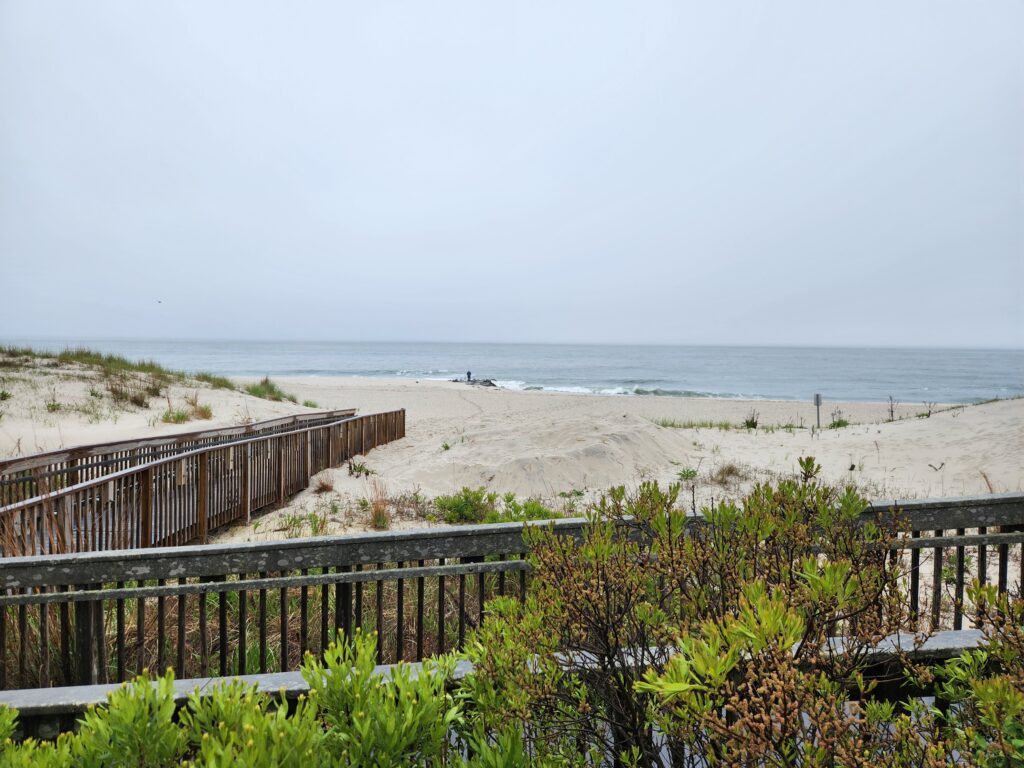
At the recommendation of some of the birders at the Coral Avenue Dune Crossing, I headed to Higbee Beach WMA. In the pouring rain, I did not see many birds, and I definitely didn’t see the migrating warblers I’d been hoping for. I did spot some Horseshoe Crabs on the beach, however, as well as a few Prairie Warblers and Indigo Buntings on territory in the subtropical dune scrub. Following that, I hopped in the car to dry off, and turned back north, heading for the Poconos. While I hadn’t seen many birds today, I hadn’t really had many targets any way, and I had seen Cape May. On top of that, the day before I had gotten two lifers and knocked all of my targets out of the park. Coastal New Jersey, you can bet I’ll be back.
